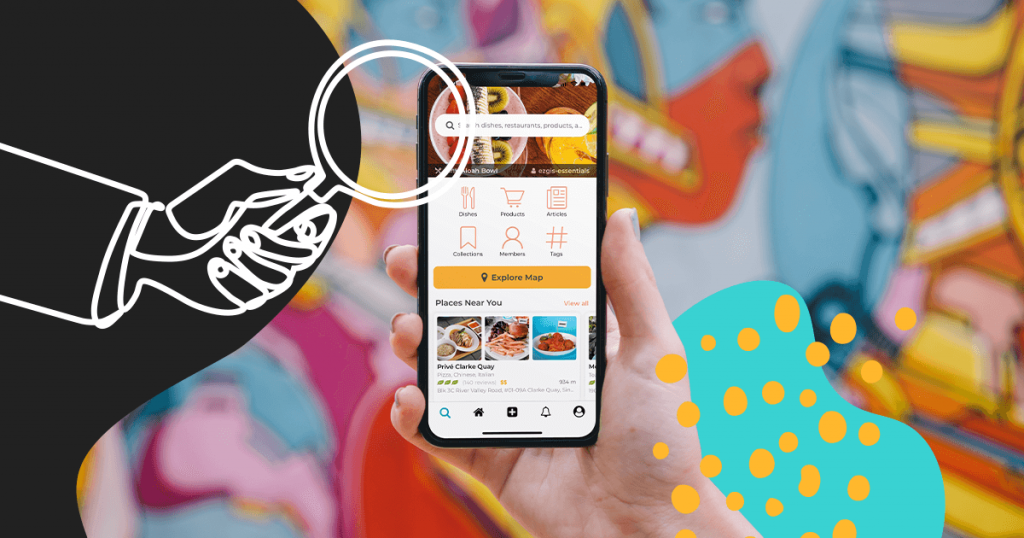Do you own or manage a restaurant, and are looking to make your online presence more than just… palatable?
Then, the trick is in mastering restaurant SEO.
If you aren’t quite sure what this is, or if you would like to delve deeper into search engine optimization for restaurants, then our comprehensive guide can help.
We will discuss:
- What Exactly is Restaurant SEO?
- Restaurant SEO: How to Increase Sales in 7 Steps
- Wrap Up: Become the Cream of the Crop with Restaurant SEO
What Exactly is Restaurant SEO?
For starters, it’s important to clarify what SEO for restaurants entails, and what benefits it can bring.
SEO, of course, refers to all those practices that are aimed at optimizing your business’s presence online.
But to be truly effective, your SEO best practices need to be tailored to your specific industry — in your case, the hospitality sector.
And guess what SEO for restaurants and hospitality is all about? Localization.
Think about it: people who are finding your restaurant through a Google search are looking for the type of cuisine that you serve in the area that they are interested in.
Whether they need to find a good vegan restaurant in their new neighborhood, or if they are on the lookout for the best pizza place while on vacation, they will very possibly search for highly geo-localized keywords.
That’s why it’s important to know the intricacies of Local SEO.
Local SEO includes two types of searches
➤ The first one is locally modified searches.
With it, the geographical term (such as town, city, neighborhood, and so on) is explicitly included in the search query.
An example? “Mexican restaurant Omaha”.
➤ Implicitly local searches, on the other hand, don’t feature a clear geographical keyword.
They rely on the ability of the search engine’s algorithm to establish where the user is located, and therefore only display locally relevant results.
For example, if you are currently in London, UK, and type in “best nachos restaurant”, you’re unlikely to find the same Omaha establishment from our previous example.
The search results will include restaurants that serve nachos in London, starting with restaurants that are closest to the neighborhood where you are currently located.
Restaurant SEO: How to Increase Sales in 7 Steps
There’s a lot of benefits to a winning restaurant SEO strategy.
Enhanced brand awareness, increased website traffic, and boosted sales, to name just a few.
But how do you come up with a good SEO plan? Here are 7 killer tactics:
1. Cook Up a Great Plan
That’s right, puns are coming (and we apologize for them in advance).
Successful restaurant SEO always begins with a well-thought-out, strategic plan.
This should include (at the very least):
- Knowing your personas really well
- Defining your geographic area.
- Researching the most relevant keywords and keyword phrases (you can do so by using a keyword research tool such as SEMrush or Moz Pro).
- Establishing your available budget.
All done? Great, now you can focus on local SEO.
2. Sprinkle Some Local SEO
Time to move from the starters to the main course: local SEO.
If you want to rank higher in local searches, you’ll need to optimize your restaurant listings across:
- Search engines, such as Google and Yahoo.
- Industry-specific or subject directories, such as Google My Business, Foursquare, CitySearch, and so on.
- Social media channels, such as Facebook, Instagram, Twitter, and more.
To achieve this, you’ll need to ensure the full consistency of your restaurant details (name, address, phone) across all these platforms.
Then, you can get a bit more specific by adding information such as your business description and other important categories that define your restaurant and include keywords that customers are likely to search for.
3. Add a Good Dose of On-Page SEO
Indexing is another important aspect to consider when optimizing your restaurant’s online presence.
This is because indexing helps you to make yourself visible to search engines, and ensures that your content is classified properly.
To begin with, you’ll want to use Google Search Console to check your XML sitemap and your robots.txt, and look for errors.
Spotting and fixing any mistakes will ensure that your website is indexed both now and in the future.
Then, you’ll need to move on to checking all your meta content: URLs, page titles, meta descriptions, headings, image alt descriptions, and copy content.
All these on-page SEO elements need to feature your unique, hyper-relevant keywords. Also have in mind the good practices about off-page SEO for restaurants.
The most important website pages that you’ll want to focus on at the beginning are your homepage, about page, restaurant menu page, and contact page.
Start from those and build up to the rest of your website.
4. Make Social Media Your Cup of Tea
You might not be fully on board with using social media to fuel your restaurant SEO strategy, but bear with us — there is a lot of potential in platforms like Instagram and Facebook.
If you create the right type of content, incorporate relevant and trending hashtags, and engage with your followers in a consistent and authentic fashion, social media can have a positive impact on your SEO strategy.
The more followers you engage with, the more people will take an interest in your restaurant, and the more online viewers your website will get.
Bottom line?
Having a solid, reputable social media presence goes hand in hand with a sound organic search presence, which in turn helps funnel more unique visitors to your website (and, ultimately, to your restaurant).
5. Make Customers Go Bananas Over You
Well, the best way to achieve this is, of course, by serving up a truly fantastic dining experience — from food to service.
But once you have achieved this, go the extra mile by inviting your customers to tell everyone how great your restaurant is through an online review.
Restaurant online reviews are so vital that they have the power to make or break your reputation.
Most of the time, online reviews for restaurants use symbols such as stars to categorize how good (or bad) a business is.
If you are happy with your current star ratings, you can leverage structured data markup to ensure that those ratings appear in users’ search results.
Not quite so satisfied with your current number of stars?
It’s time to focus all your efforts on offering a stellar experience — and then asking your happy customers to rave about you.
6. Spice up Your Content (and Make It Local)
Content was, is, and will continue to be king.
What Bill Gates famously wrote in his 1996 essay still holds true to this day: “Content is where I expect much of the real money will be made on the Internet, just as it was in broadcasting.”
And when you are in the process of developing some content for your restaurant business, keep the three C’s in mind:
- Creative: you’ll want to stand out from the crowd with content that is unique and that truly defines the essence of your brand identity.
- Concise: remember to provide enough information to entice your audience, but not so much that it ends up being overwhelming and distracting.
- Convincing: ultimately, you should aim for your content to persuade your audience that your restaurant serves great food and delivers fantastic service.
Do you think that content exclusively means written copy? Then, you should think again.
One of the (many) beauties of content is that it spans a vast array of deliverables, which include videos, photos, infographics, and more.
So unleash your imagination!
Produce original, interesting, and persuasive content that offers information about your restaurant — including food, history, founders, culture, and more.
And remember to always include all the relevant keywords that will help potential customers to find you on search engines.
7. A Mobile-Friendly Website? Piece of Cake!
Did you know that there currently are a whopping 4.3 billion unique mobile internet users?
With a hand-held device, people can search for anything, including your restaurant.
So, if you want them to find your website, get to know more about your business, and eventually book a table or order a take-away from you, then you need to make sure that your website is optimized for mobile.
This means that your website content should be easily accessible and visible on a smaller screen, and that its load times should be as fast as those that a desktop internet user would experience.
But there’s even more to mobile-friendliness than pleasing customers — though that is, of course, a priority.
Mobile-ready websites are also preferred by Google, as the system uses the mobile version of a website to better understand its content.
So, ensuring that your restaurant website is optimized for mobile should really be a no-brainer.
Wrap Up: Become the Cream of the Crop with Restaurant SEO
When it comes to creating a winning SEO strategy for your restaurant, it’s important not to keep all your eggs in one basket.
Variety is key. You’ll need to combine elements of local SEO with great content, as well as engage with social media and prioritize mobile-friendliness.
Would you like to unlock even more insights into SEO?
Then check out our complete Search Engine Optimization guide! It’s packed with good information and it will help you reach top Google results.


![[WA] Ultimate Content Marketing Kit](https://rockcontent.com/wp-content/uploads/2022/08/Content-Marketing-Kit-750x200px.jpg)








